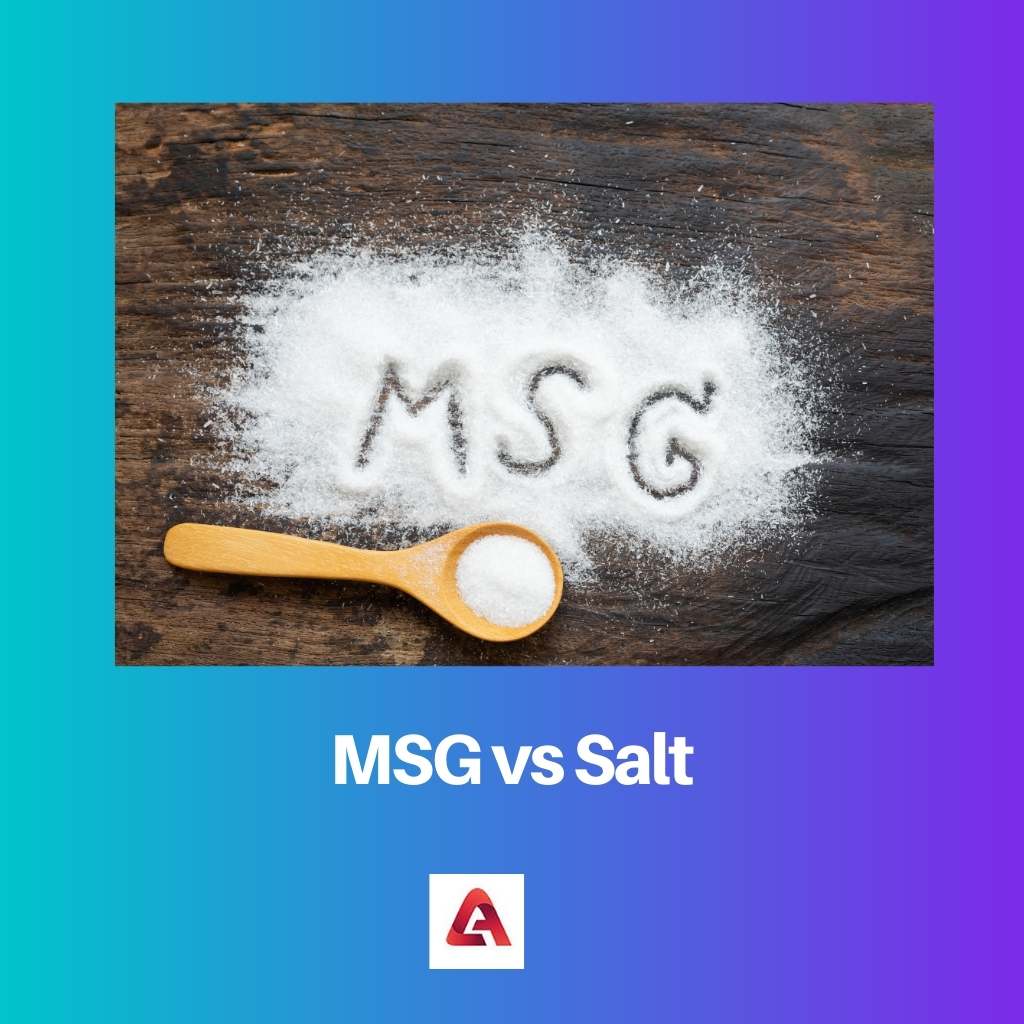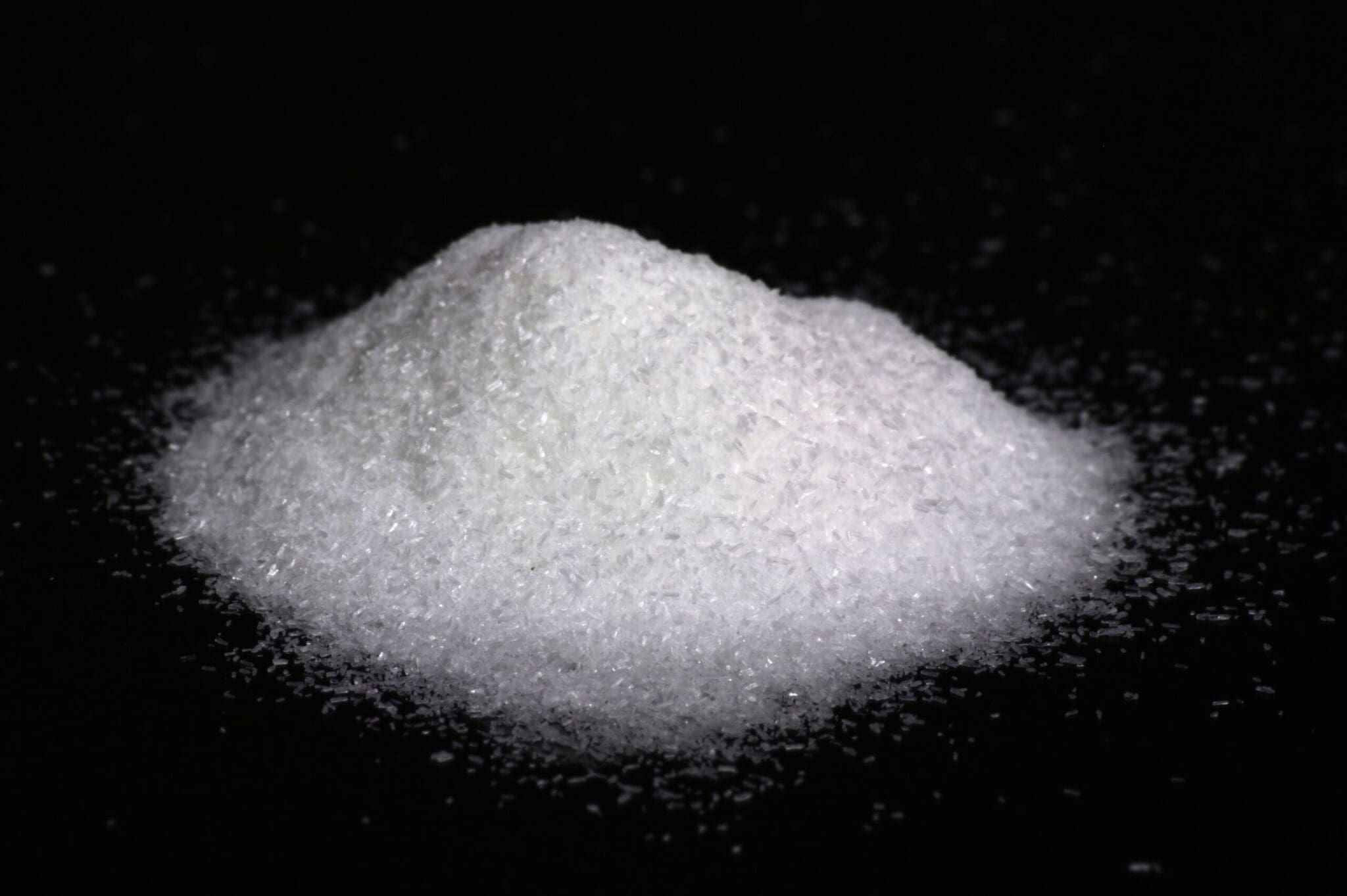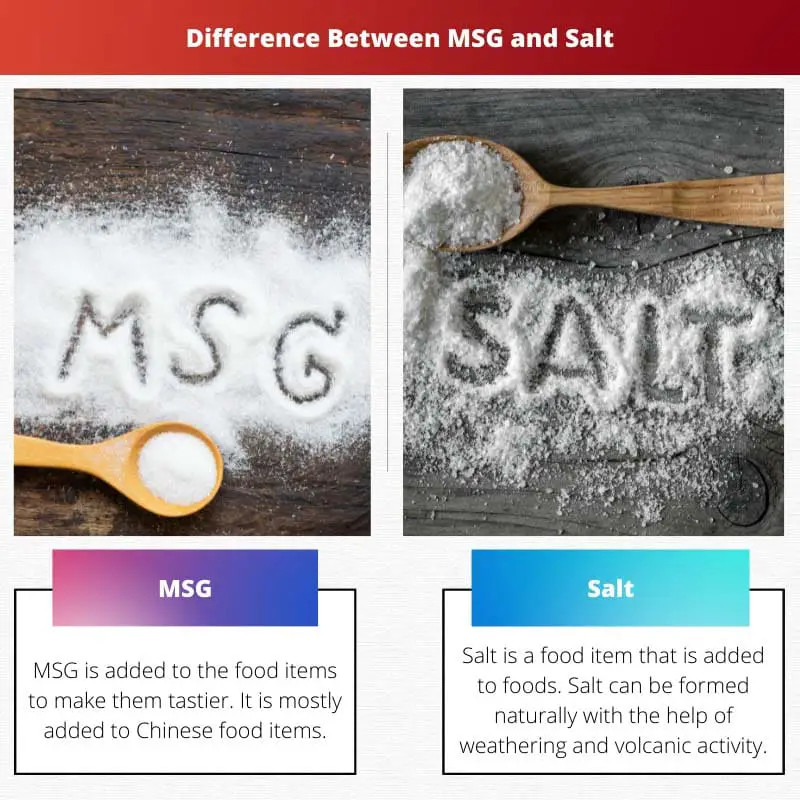Adding salt content to food is very important to get a proper taste in the food and the nutrients to our body. There are different types of Salt available.
Based on our availability, we can include them in our food. But eating them in the raw form will lead to serious issues, especially when you exceed the mentioned amount limit.
Key Takeaways
- Monosodium glutamate (MSG) is a flavor enhancer that adds an umami taste to foods derived from glutamic acid.
- Salt, or sodium chloride, is a mineral used to season and preserve food, providing a salty taste.
- Both MSG and salt enhance food flavour, but MSG contributes explicitly to the umami taste profile.
MSG vs Salt
The difference between MSG and Salt is that MSG is called sodium salt, which is made up of glutamic acid. Salt is a mineral that is used in making foods, and it is made up of sodium chloride. We can use MSG as a food preservative so that the foods will stay longer. Salt is important for human health, especially for people who have low BPs.

MSG is added to the food items to make them tastier. It is added to Chinese food items.
Eating MSG can affect people’s brains as well. It will act with our taste buds which makes it tastier for us.
But people with sodium sensitivity can benefit from this Salt, as it will help them with blood pressure illness.
Salt is a food item that is added to foods. Salt can be formed naturally with the help of weathering and volcanic activity.
We can make Salt by a solar evaporation method, a vacuum evaporation method, and a rock salt mining method.
Sometimes skipping Salt can lead to coma and death. This is a rare case because our diet has enough salt content.
Comparison Table
| Parameters of Comparison | MSG | Salt |
|---|---|---|
| Sodium involvement | 12% | 39% |
| Melting point in Celsius | 232 degrees Celsius | 801 degrees Celsius |
| Definition | It is a sodium salt that is made of glutamic acid | It is a mineral that consists of sodium chloride |
| Uses | It is used as a food preservative and also as a flavor enhancer | It is used as an essential compound for human health |
| Molar mass value | 169.11 grams per mole | 58.44 grams per mole |
What is MSG?
It is a type of salt that is added to Chinese food, which gives a food flavour to the food while eating. It will be added to processed meats and soups as well.
It has no color in it. It used to be in plain white color. It comes under the type of glutamate.
It is also recognized as safe by the government to eat. But we should only consume it in a limited amount, not in excess.
Because the excess amount will lead to health issues sometimes, and the taste can also turn into an addiction.
Consuming MSG without mixing it in any food will lead to headaches and drowsiness. Sometimes, people can even feel numbness as well.
Despite giving taste to the food, it can lead to some adverse effects on the body.
It can cause obesity, Chinese restaurant syndrome, detrimental effects of obesity, and neurotoxic effects on the human reproductive system.
Consuming it daily will lead to some problems in the human reproductive system.
Some food items are high in MSG, such as fast foods, chips, snacks, processed meats, and instant noodle packets. These food items have a rich, salty taste which will make children and adults eat them again and again.
It will more likely turn into an addiction if eaten daily. We can know whether the food item has MSG or not by checking the code in the packet of the food item or the ingredients list. The code number is 621.

What is Salt?
Salt is a mineral substance of great importance for human and animal health. The chemical formula for salt is NaCl. It can be formed when hydrochloric acid is added to sodium hydroxide.
There are three types of Salt available such as acidic Salt, basic Salt, and neutral Salt. The word Salt is derived from a Greek word called halos. Once ancient seas were long evaporated, people discovered Salt and added it to food.
It is used in all food items to give a proper taste. Without Salt, the food will be very blunt. It not only gives taste to food but also acts as a good preservative for food.
Seafood is preserved well for a long time with the help of Salt. Not only in food, but it is also used in the tanning, bleaching, and dyeing industries.
It is used to make soap, chlorine, and pottery. It is considered the widely used chemical component in the chemical industry.
Himalayan Pink Salt is considered one of the world’s healthiest Salt. It is technically called sea salt.
A human cannot live without having sodium content in the body, which comes from Salt. To maintain proper fluid balance in the body, we need Salt.
It is also essential for nerve and muscle function. So, including them in our diet is important for the human body to function properly without any difficulties.

Main Differences Between MSG and Salt
- MSG is a sodium salt that contains glutamic acid. On the other hand, Salt is a mineral which will have sodium chloride.
- The sodium involvement in MSG is low, which is 12%. On the other hand, the sodium involvement in Salt is higher, which is 39%.
- The melting point celsius of MGS is 232 degrees Celsius. On the other hand, for Salt, it is 801 degrees Celsius.
- MSG can be used as a preservative for food which will also enhance the flavour of the food. On the other hand, Salt is an essential component of food as well as human health.
- The molar mass value of MSG is 169.11 grams per mole. On the other hand, for Salt, it is 58.44 grams per mole.




